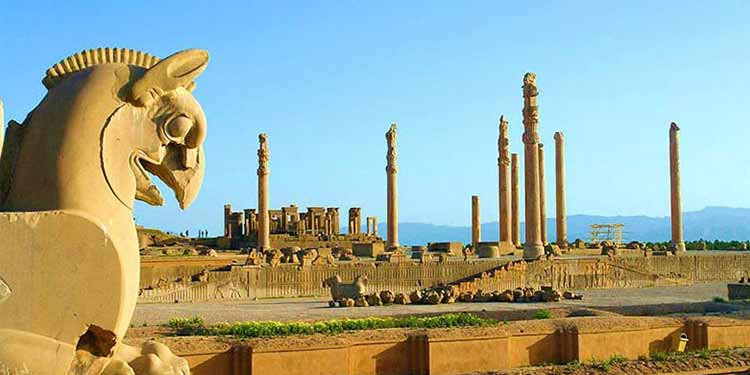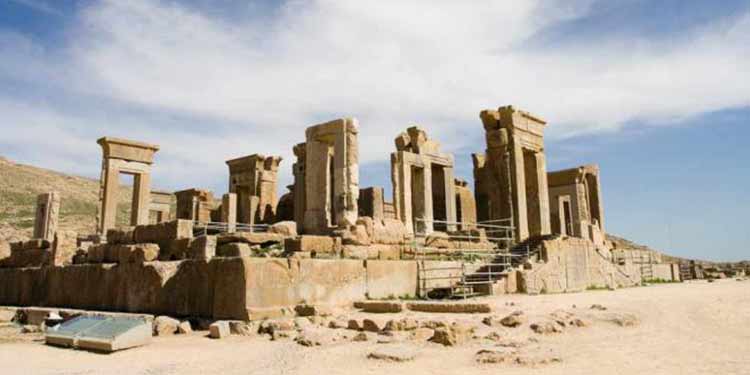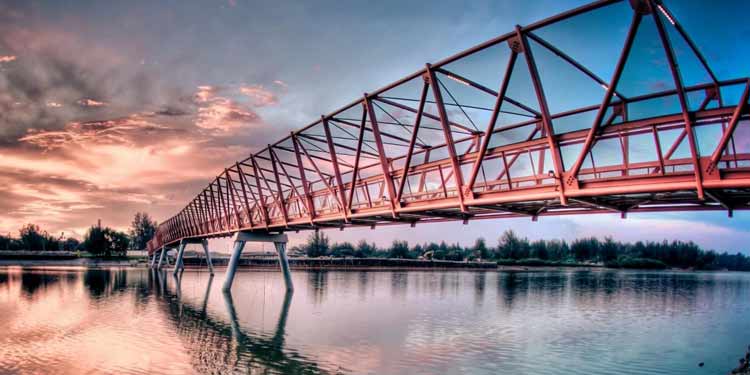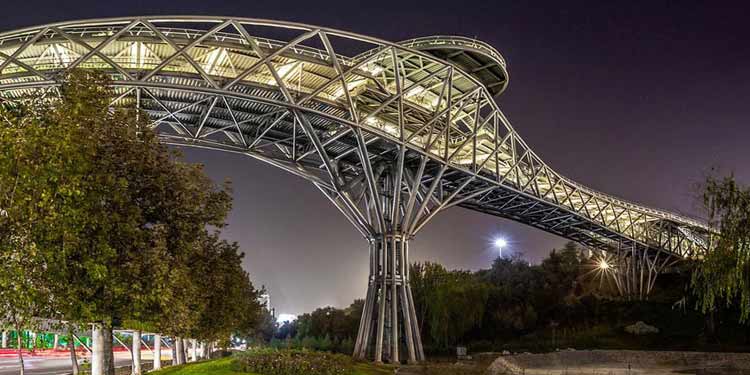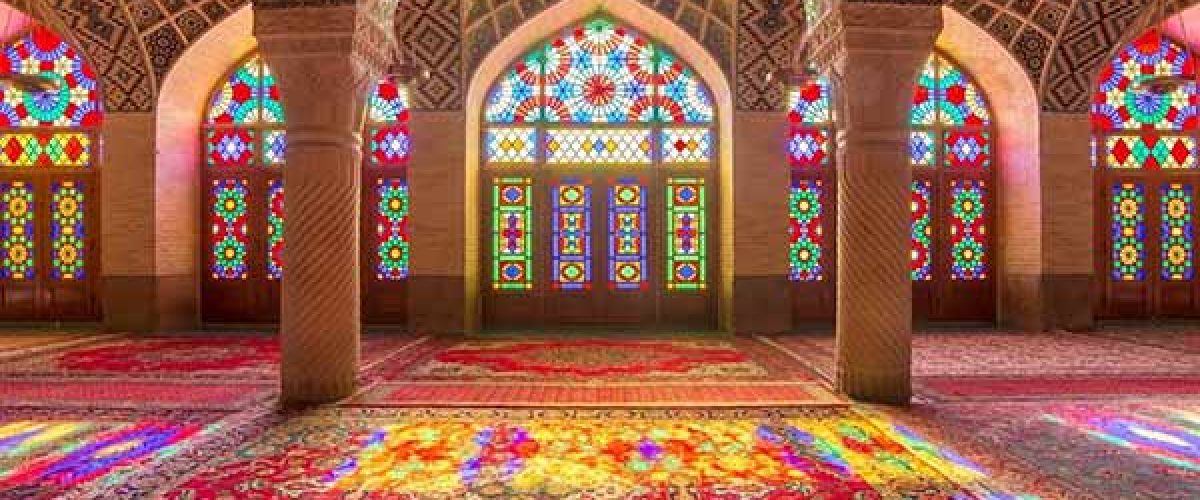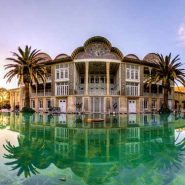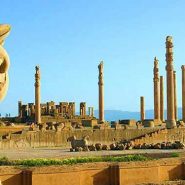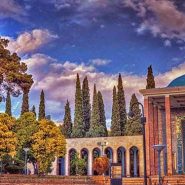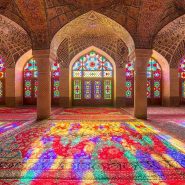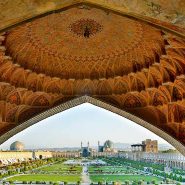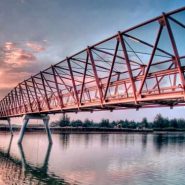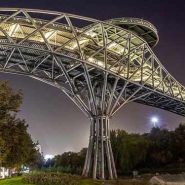Tehran-Hamedan-Kermanshah-Ahvaz-Shiraz-Meymand-Kerman-Bam-Yazd-Isfahan-Kashan-Tehran
Day 1: Arrival in Tehran
We kindly congratulate you upon your delicate choice! Right on your arrival, we will pick you up at IKA International Airport and transfer you to the hotel
O/N Tehran / Hotel
Day 2: Tehran
A full day Sightseeing in Tehran including: We will enjoy ourselves while visiting Golestan Palace (WHS) one of the oldest of the historic monuments in the city of Tehran. Next we visit National Museum of Iran which holds an incredibly wide range of pre-Islamic as well as post-Islamic remaining works including pottery vessels, metal objects, textile remains, and some rare books and coins. Make sure not to miss Treasury of National Jewels Museum. Here is the most dazzling collection of gemstones and jewelry known in the world; then we will visit Azadi Tower.
O/N Tehran / Hotel
Day 3: Tehran – Hamedan (320 km Drive)
Today we will move toward Hamedan. Hamedan province is situated in Middle Western Iran. The province is famous for its raisins (1500 hectares of vineyards) and in the Persian rug trade, it ranks second only to Kerman. We visit Hegmataneh Archeological Palace, dating to the 6th century BC. Its structure is from the times of the ‘Medes’. ‘Kiyakesar Madi’ and ‘Nabopolassar Baboli’ were responsible for building this structure in the year 614 BC. Our next step will be Avicenna Tomb. Avicenna is one of the renowned scientists and geniuses of Iran and the world whose works, especially “The Canon” which was a medical encyclopedia, have been translated in several languages and taught for years in the most prestigious universities all around the world. This brilliant scientist has eminent works and profound knowledge about various sciences including philosophy, mathematics, medicine, natural science, occult science, music, and psychology. The next fascinating step will be Gonbad-e Alavian (or Alavian Mosque) which is a four-sided interesting 12th-century mausoleum belonging to the late Seljuk period. On the exterior, it resembles the Gonbad-e Sorkh of Maragheh. After that, we visit the tomb of Baba Taher, which is located in a park, surrounded by flowers and winding paths. Baba Taher is known as one of the most revered and respectable early poets in Iranian literature. The next place is Ganjnameh Inscription. This inscription is relics from the period of ‘Darius’ and ‘Xerxes’ of the Achaemenid era. That is located at the end of the Abbas Abad Valley and has been engraved on a mountain.
O/N Hamedan / Hotel
Day 4: Hamadan – Kermanshah (186 km Drive)
You will visit one of the beautiful sightseeing in Hamedan is called Estero Mord Khay Tomb (Ester and Mord Khay). This is the tomb of Ester the Queen of Shush (the wife of Xerxes of Iran). Mordecai (Mord Khay) was her uncle. Its structure has been constructed of brick and stone about 11 centuries ago, in order to pay homage to these two personalities
Afterward, we drive to Kermanshah. En-route we will visit Anahita Temple at Kangavar. Bear in mind that there are two different sites that are attributed to Anahita, a Persian Deity, who is associated mostly with wisdom, fertility, and healing. The one you are going to visit is the larger one and the more famous one, and it is located in Kangavar.
Then you will visit Achaemenid inscriptions at Bisotun (A registered site in UNESCO world heritage) which are among the largest rock reliefs in the world. These carvings and inscriptions tell us a story the story of Darius the Great and his victories in battlefields. The carvings are so detailed that it leaves you wondering how Achaemenids managed to leave such a rich legacy behind, a legacy that still remains today and still managed to surprise the modern man.
O/N Kermanshah / Hotel
Day 5: Kermanshah
Today, you will visit Sassanian Bas-relief at Tagh-Bostan, it is an archaeological site which belongs to the Sassanid dynasty. The carvings are mostly centered on the glories and victories of Sassanid kings. They are the example of some of the finest sculptures in Iran. What is most interesting is that these carvings have endured hundreds of years of strong winds and rain and yet they are still firmly standing. After that we visit Takieh Mo’aven ol-Molk and Shafei Mosque.
O/N Kermanshah / Hotel
Day 6: Kermanshah – Ahvaz (527 km Drive)
We departure from Kermanshah towards Susa to see the exquisite beauty of the magnificent Chogha Zanbil Temple, the temple belongs to Elam Period, 3200 years old. It is one of the few extant ziggurats outside Mesopotamia. Archaeological excavations undertaken between 1951 and 1962 revealed the site, and the ziggurat is considered to be the best-preserved example in the world. In 1979, Chogha Zanbil became the first Iranian site to be inscribed on the UNESCO World Heritage List.
After visiting the Haft Tape Museum near the Ziggurat, we’ll visit the Tomb of Daniel, a very famous Jewish saint. In this city, you’ll see a Shushtar Historical Hydraulic System (A registered site in UNESCO world heritage) and a traditional house. Later, we’ll continue the way to Ahvaz.
O/N Ahvaz / Hotel
Day 7: Ahwaz – Shiraz (537 km Drive)
In the morning, we drive to Shiraz. But on the way, we’ll have a chance to visit several outstanding sites dating back to Elamite (3-5 thousand years ago) and Sassanid eras (1800 years ago). These monuments are interesting and worth visiting Bishapour city remains are situated south of modern Faliyan in the Kazerun County, on the ancient road between Persis and Elam. The road linked the Sassanid capitals Istakhr (very close to Persepolis) and Ctesiphon.
The next marvelous step will be Tang-e Chogan which is a valley with a running river to the north of the Ancient City of Bishapour. There are 6 rock reliefs telling the story of the Roman Empire defeat by Sassanid king, Shapur II (309 -379) and also King Bahram II (276–293) conquering Arabs and rebels. Afterward, we continue to drive to Shiraz
O/N Shiraz / Hotel
Day 8: Shiraz
You will start your full day tour of Shiraz. At first, you will visit Nasir-al-Mulk Mosque (Pink Mosque) few steps far from Vakil Bazaar. It built by the order from one of the lords of the Qajar Dynasty, Mirza Hasan ‘Ali Nasir-al-Mulk, it took 12 years to complete in 1888. Its interior reveals a magnificent masterpiece of design with stunning colors. Then, you will visit Karim Khan Citadel, built during the Zand Dynasty. You walk to the Pars museum to see the amazing paintings from the time, the Karimkhan tomb inside the pavilion and Nazar gardens. After that, you’ll have time to explore and shop in the bustling Vakil Bazaar, home to hundreds of stores, beautiful courtyards, and even an ancient caravanserai. Continue your exploration in Shiraz at the beautiful orange-scented Narenjestan Garden, laid out in the 19th century during the Qajar Dynasty. You can visit the Holy Shrine of Shah-e-Cheragh. Shah-e-Cheragh is the most important place of pilgrimage within the city of Shiraz. The tombs became celebrated pilgrimage centers in the 14th century when Queen Tashi Khatun erected a mosque and theological school in the vicinity.
O/N Shiraz / Hotel
Day 9: Shiraz
Shiraz is famous for its gardens and we’ll visit the Eram Garden with its aromatic myrtles, beautiful flowers, fruit trees, and towering cypress (one of which is said to be 3,000 years old.)
End your day in Shiraz on a tranquil note in the lovely garden Tomb of Hafez, one of our most outstanding poets to feel the taste of Persian Literature. Hafez is one of the great poets who impressed everyone with his mastery. His poems give us a special feeling and the peace in his tomb is really outstanding.
Time permitting; we can walk around Quran Gate.
Tonight, we try local Shirazi food and a must try in Shiraz is a Shirazi salad, made of tomatoes and onions which is delicious in its simplicity.
O/N Shiraz / Hotel
Day 10: Shiraz – Meymand (392 km Drive)
In the morning we drive to Rocky Village of Meymand; it is a good idea to stock up on locally bought and easily found dates and pistachio nuts for the journey.We will have some stop in our way to visit the legendary city of Persepolis, the former capital of Darius the Great and founded in 512 BC. There was no more impressive construction in the ancient world, except perhaps Karnak in Egypt, afterwards we will visit Naghsh-e Rostam which is an ancient Necropolis, a large ancient cemetery with elaborate tomb monuments. Here you can see a group of ancient Iranian rock reliefs cut into the cliff, from the Sassanid periods.
O/N Meymand / Guest House
Day 11: Meymand – Kerman (236 km Drive)
Today will be spent visiting Meymand (to be inscribed on the UNESCO World Heritage List on 2015), an exotic village; in which people are living in a kind of stone house/cave. This village has won the international Melina Mercury Prize, because of the adaptation of human being and nature. Then we move to Kerman to discover how people adapted their life to a desert city surrounded by mountains. We visit Ganjali Khan Complex. The complex is composed of a school, a square, a caravanserai, an Ab Anbar (water reservoir), a mosque, a bazaar and a bathhouse. You will uncover Iranian old style bath in Ganjali Khan Bath of Kerman.
O/N Kerman / Hotel
Day 12: Kerman – Shahdad – Kerman (96.4 km Drive)
Today we visit Moshtagh Alishah tomb, you have an opportunity to get acquainted with Sufism and mysticism. Then you will see Kerman Jame mosque and its majestic Persia structure.
After lunch, we drive to Shahdad is located at the edge of the Lut desert, for visiting a wonderful scenery of desert in Kaluts. Kaluts are the wonderful sandy shapes created by wind or water erosion. They are the most beautiful natural phenomena. They are unique and can’t be found in any desert of the world. In the evening, we will return to Kerman.
O/N Kerman / Hotel
Day 13: Kerman – Bam (239 km Drive)
In the morning we drive to Rayen and visitthe Rayen Citadel. Rayen Citadel is considered the biggest earthen structure of Kerman province after Bam Citadel. Leaving Rayen behind, we will travel to Bam to visit a unique mud-brick Bam Citadel (A registered site in UNESCO world heritage.)
O/N Bam / Hotel
Day 14: Bam – Yazd (543 km Drive)
Today on the way back you will stop in Mahan. Meet Sufis who have traveled a long way to paying homage to their Sufi master Shah Nematollah Vali Shrine. Get relax in Shahzadeh Garden and admire a great example of Persian gardens that depicts a high contrast between a green garden and a harsh desert in the background.
Then we continue to Yazd. On the way we visit Zein-Al-Din Caravanserai of Mehriz. Robat Zein-Al-Din, a masterpiece of architecture from Safavid era, is a beautiful traditional caravanserai, restored to its original glory. This caravanserai is orbicular from outside and twelve findings from inside. You enter the circular structure through a small wooden door and you find yourself in a beautiful courtyard. It has succeeded in obtaining the award for the best repair in the year 2006 by the UNESCO and has been known as one of the 101 superior hotels in the year of 2009.
O/N Yazd / Hotel
Day 15: Yazd
Yazd is one of Iran’s oldest continuously inhabited towns, its silhouette punctuated by minarets and the ingeniously-designed wind towers that capture desert breezes to cool homes during the hot summer months. At the Tower of Silence, you’ll learn about one of the traditions of this ancient pre-Islamic religion: Until the mid-1900, the dead were transported to this tower where they were left to decompose and be devoured by birds. At the still-active Zoroastrian Fire Temple, you’ll see a flame that is said to have been burning for the past 1,500 years. It’s an important pilgrimage site for the faithful and here our expert guide will offer additional insight into one of the world’s oldest monotheistic religions. In Amir Chakhmaq Square, you’ll see a very impressive Hussainiya – a congregation hall for Shia commemoration ceremonies. With three tiers of recessed alcoves, all perfectly proportioned, its façade is one of the city’s most photographed landmarks. Then visit the Jame Mosque, built in 1324, where you can gaze upon the tallest minarets in the country.
O/N Yazd / Hotel
Day 16: Yazd – Isfahan (323 km Drive)
Leaving Yazd behind, your first stop this morning will be in Meybod, where your first impression might be its striking monochromatic architecture of desert brick. But set along an ancient trade route, Meybod also offers a number of fascinating sites to visit including its caravanserai. Built in typical Safavid style, this ancient desert inn features verandahs, shaded passageways, and nearly 100 rooms – some of which are now used as artisan workshops. At the local ice house, you’ll learn about the thick-clay construction and subterranean chamber that allowed local residents to have ice and food storage before refrigeration – even during the intense desert heat of summer!
Your overland journey continues to the small town of Na’in, an ancient community with origins dating back to the 8th century. At the local Ethnographic Museum, set in an erstwhile private residence of the Safavid era, you’ll learn more about the region’s cultural traditions.
O/N Isfahan/ Hotel
Day 17: Isfahan
As the 17th-century capital of the Safavid Empire, Isfahan was one of the world’s greatest cities – architecturally striking, wealthy beyond imagine, and politically powerful with Europeans, Ottomans, Indians, and Chinese coming to its court – the heart of a vast Persian Empire that stretched from the Euphrates River in present-day Iraq to the Oxus River in Afghanistan. Indeed, its grandeur inspired the rhyming proverb, Isfahan nesf-Jahan (Isfahan is Half the World.)
This afternoon, your exploration continues in Imam Square. This 17th-century site is one of the largest public spaces in the world. Here in the square, you’ll visit the 17th-century Shah Mosque, revered as a masterpiece of Islamic architecture and easily recognized by its magnificent tile-work and soaring cupola and minarets. In the Ali Qapu Palace, you’ll marvel at its beautiful music rooms and the balconies where Safavid kings would sit to enjoy the polo matches unfolding in the square below. You’ll end your day exploring the Qeisarieh Bazaar that surrounds Imam Square. With hundreds of local vendors that specialize in traditional arts and crafts, it’s a wonderful place to shop for pottery, enamel, jewelry and delicately inlaid board games. Next up is Chehel Sotun. Set in a landscaped and forested park in front of a tranquil reflecting pool, this graceful pavilion was built by Shah Abbas II for entertainment and court receptions.
O/N Isfahan / Hotel
Day 18: Isfahan
In the city’s Armenian quarter, you’ll delve more deeply into the region’s complex history as you visit several churches including the 17th-century Vank Cathedral with its lavishly decorated interior and unique blend of Islamic and European architectural elements. In the afternoon, you’ll return to the center of town to continue exploring the shops and landmarks that surround Imam Square. Other famous bridges on the Zayandeh River are Sio-se–pol, and Khaju. There are sluice gates below the bridge to let the water runoff from Zayandeh River in the spring, and there are beautiful stone archways above each gate.
O/N Isfahan / Hotel
Day 19: Isfahan – Kashan (176 km Drive)
Leaving Isfahan behind, your first stop this morning will be in Natanz. In the town of Natanz, you’ll see the finely decorated, 13th-century tomb of Sheikh Abd al-Samad. Your overland journey continues to the Abyaneh village. Abyaneh Village is known as the Red Village because of its red soil and houses. The houses of Abyaneh bear an ancient architectural style, featured by the use of clay as the construction material and latticed windows and wooden doors. Then we drive to Kashan
O/N Kashan / Hotel
Day 20: Kashan – Tehran
Kashan is a town known for its superb ceramic industry dating back to the 12th century. In Kashan, you will visit Boroujerdi and Tabatabaei Traditional House and Fin Garden (A registered site in UNESCO world heritage). This very early Persian garden reflects ancient landscaping principles that trace their roots to the time of Cyrus the Great in the 6th century BCE. In the afternoon, you will drive back to the capital.
O/N Tehran / Hotel
Day 21: Tehran – Departure
Today is the last day you are in Iran, there are no activities planned for the final day and you are free to depart at any time. Please note you must check out of the hotel by 12pm. We directly drive to airport for departure
Gallery



